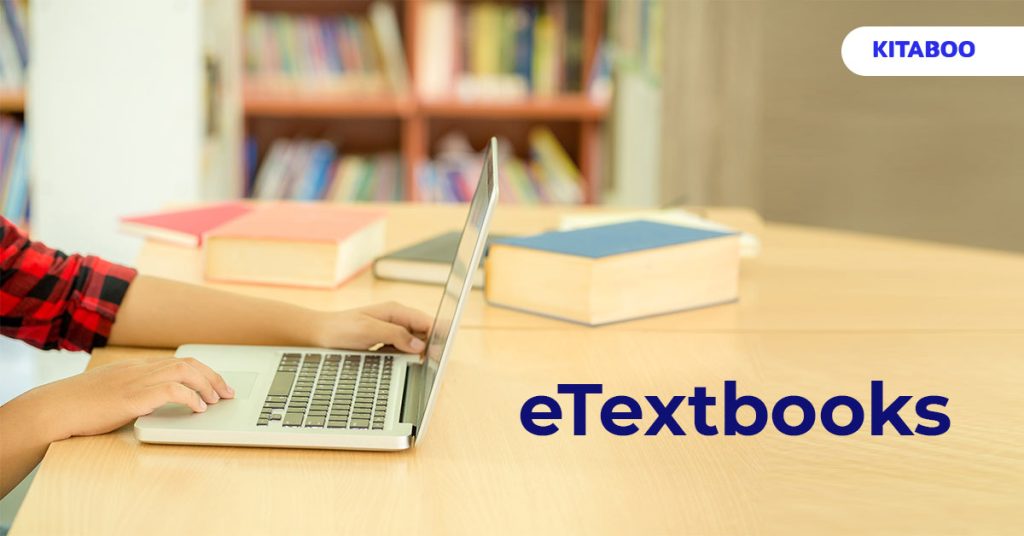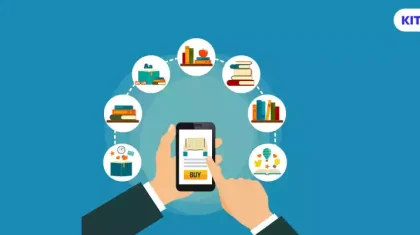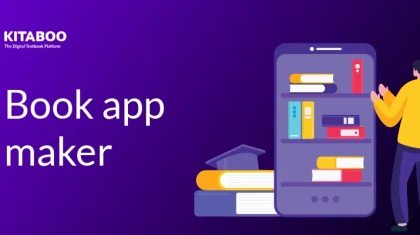
From Paper to Pixel: How Digital Textbooks are Transforming the Way We Learn
Summarize this blog with your favorite AI:
The world of education has changed drastically in the last few years. The most notable change has been the shift to digital learning. Although it took some adjustment time, digital learning has now been embraced by students, faculty members and even school administrators.
However, it’s no longer just about conducting classes online. Digital learning has become the new normal in more ways than one could imagine. From online assessments to digital textbooks, the transformation from paper to pixel was just the tip of the iceberg.
In this article, we’ll take a look at how digital-first textbooks impact K12 education.
Here’s what’s in store for you:
Table of Contents
- 10 Ways in Which Digital Textbooks Are Transforming the Way We Learn
- Makes Learning More Engaging
- Makes Learning More Accessible
- Learning On-The-Go
- In-Depth Learning
- Personalization
- Interactive Reading
- Relevant Learning
- Affordability
- An Analytic Approach
- Scaling Collaborative Learning
- Conclusion
10 Ways Digital Textbooks Transform the Way We Learn
1. Makes Learning More Engaging
Online textbooks come with the added advantage of interactivity. Using multimedia, content can be presented in various formats such as videos and animations. This helps students visualize the learning material better.
Other features of digital textbooks such as underlining and highlighting make the reading and learning process more active for students.
2. Makes Learning More Accessible
Most digital textbooks have an audio or text-to-speech feature. This allows students to listen to a recording of the text in the book. Not only does this help learners who lean towards the auditory learning style, it also helps students who are differently-abled.
Additionally, with the variety of content formats available, these textbooks become accessible for students with any learning style.
3. Learning On-The-Go
Online textbooks are accessible from any place with an internet connection (and in some cases even that’s not required). That apart, they can also be accessed from a single device.
So whether a student is rushing between extracurricular activities or is traveling to school, they can continue their learning on-the-go.
4. In-Depth Learning
Digital books enable learners to juggle between studying their primary text and doing additional research, with ease. Often, additional reading material is hyperlinked to the primary text, making it easier for students to access and providing them with an in-depth learning experience.
Educators can also give students assignments that require them to do further research.
5. Personalization
In the old days, everyone was given the same material to learn from. While that essentially hasn’t changed, digital textbooks allow students to make a few adjustments based on their individual preferences.
For example the font size and backlighting of an online textbook be adjusted. This is especially useful for students who struggle with understanding concepts written in fine print.
Similarly, as one is used too, digital textbooks also come with useful features like highlight and comment functions. These help students make their own notes, which they can later refer to quickly.
6. Interactive Reading
Digital textbooks enable students to listen to audio versions of the text. They also have other features that allow students to find definitions of a word and shift between different sections of the book.
Features like hyperlinks make for a more engaging experience. They can also contain quizzes and multiple-choice questions to engage students.
7. Relevant Learning
How much of what you learnt in school is still relevant today? Chances are, not much. Unfortunately, in the pre-digital era, updating textbooks was a time-consuming, costly affair. However, with digitization, today’s generation has the chance to learn the latest in any subject.
Digital updates are a great way to keep textbooks up-to-date and allow for easy changes without the cost and time involved in republishing.
This helps avoid outdated material and ensures that the material studied is relevant and accurate.
8. Affordability
The cost of classroom learning can be quite high. Parents of K12 students need to pay for a host of things including uniforms, infrastructure, admissions, additional facilities and so on. Added to this is the cost of learning materials and textbooks.
Digital textbooks are usually priced much lower than traditional textbooks and come with more features. This makes learning today far more affordable. Plus, students can also save costs on buying new textbooks since digital textbooks can easily be updated to show current information.
9. An Analytic Approach
Unlike traditional textbooks, digital books come with in-built analytics and tracking capabilities. This has played a major role in transforming the way students learn.
With these analytical tools, educators have deeper, more accurate insights into the performance and capabilities of their students, allowing them to curate the subject-matter to better fit each student.
10. Scaling Collaborative Learning
They say, collaboration makes the world go round. And, they’re right! With the world growing smaller everyday, the importance of learning how to collaborate is crucial for the success of any student.
While traditional classrooms did allow for collaborative learning, today’s digital textbooks have taken it up a notch. These days students can collaborate with their peers on a global scale. Time zones don’t need to match and learning material is not difficult to share.
Conclusion
Digital textbooks are changing the way K12 students and any other learners engage with educational material. Clearly, these textbooks are much more than just electronic versions of printed books. They provide a complete learning package filled with extensive interactive content.
In order to stay ahead of the curve, K12 content creators and publishers need to tap into digital-first textbooks.
A digital publishing platform like KITABOO, could be just what you need. With KITABOO, you can create, publish and even distribute your digital learning content across devices and platforms with ease.
KITABOO also allows the integration of highly interactive content such as video, audio, animations and so on.
To know how you can transform the way your learners use digital textbooks, write to us at contact@kitaboo.com.
Discover how a mobile-first training platform can help your organization.
KITABOO is a cloud-based platform to create, deliver & track mobile-first interactive training content.


